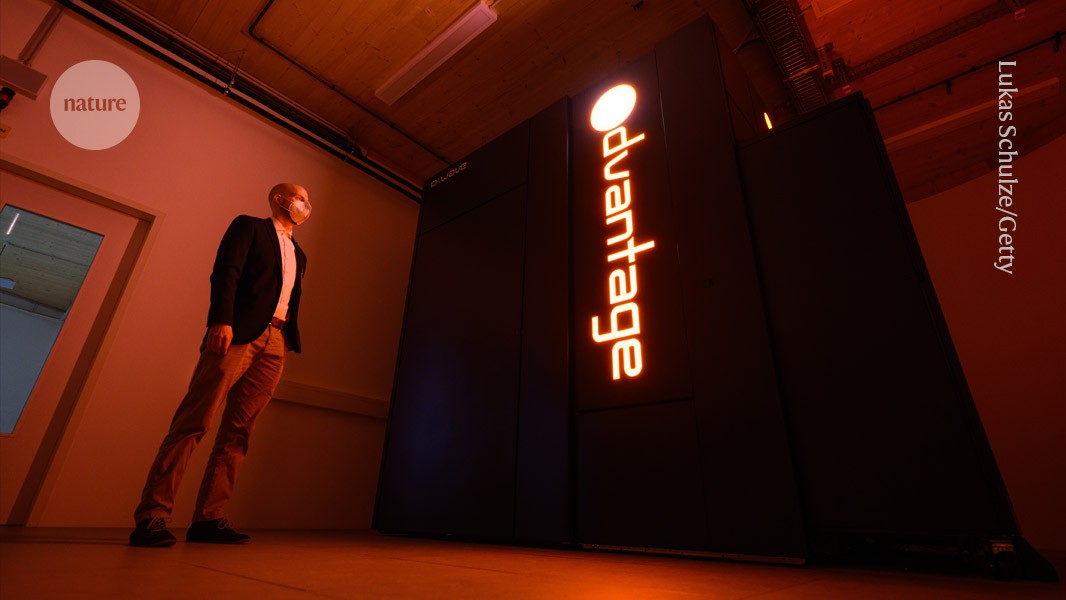Quantum stocks boom then bust: is there science behind the whiplash?

Amid stock-market jitters, quantum computing start-ups continue to make progress — and to score hundreds of millions of dollars in investments
Quantum-computing companies have been grabbing headlines since Jensen Huang, chief executive of tech giant Nvidia, reportedly told market analysts on 7 January that he couldn’t see quantum computers becoming “truly useful” for another two decades. The day after, the share prices of firms IonQ, Quantum Computing Inc., Rigetti and D-Wave crashed — although they have since partially bounced back.
The volatility follows major ups and downs for these firms in recent years. In 2024, their stocks reached record highs, following announcements by Google in December, including that its Willow quantum chip had achieved a milestone in lowering the error rate of calculations, a breakthrough in the quest to build useful quantum computers. The technology promises to harness quantum physics to perform some calculations — such as the details of chemical reactions or factoring large numbers into prime factors — that would take a classical computer longer than the age of the Universe.
Are these companies’ stocks as fragile as the quantum states of the qubits they are designing? And are the swings justified by technological and scientific breakthroughs — or setbacks?
Industry optimism
Global Quantum Intelligence (GQI), a company that tracks the quantum market, doesn’t think so. “Although the quantum technology has continued to make steady progress in 2024, and will continue to do so in 2025 and beyond, we feel the stock market has overreacted to all these announcements,” says Doug Finke, a computer scientist in Orange County, California, who is GQI’s chief content officer.
“The industry has kept up a steady pace of progress, and optimism prevails”, says Maria Schuld, a physicist who works for quantum-computing startup Xanadu and is based in Durban, South Africa.
To many observers, the biggest surprise was that Huang didn’t say anything that most quantum-computing specialists hadn’t been saying publicly for decades. “It’s a lot harder than people think” to build a full-scale quantum computer, says John Martinis, the physicist who led Google’s quantum-computing team through its 2019 breakthrough — the achievement of ‘quantum advantage’, or performing a calculation that is beyond the capabilities of any current classical computer. He has since left and co-founded a quantum-computing start-up called Qolab in Santa Barbara, California.
Perhaps one clear sign that the race is still in an early stage is that none of the many platforms used for building quantum computers — the type of physical embodiments of qubits, the quantum equivalents of classical bits — has yet clearly pulled ahead of its competitors. “I would have thought we would have had a clear winner by now, but we don’t,” Scott Aaronson, a theoretical computer scientist at the University of Texas at Austin, told the Q2B24 convention in December.
Competing technologies
Two technologies are seen as leading the pack. The one favoured by Google, IBM, Rigetti, Qolab and others represents quantum states as currents in superconducting loops. The other, pushed by firms including IonQ, Quantinuum and Alpine Quantum Technologies uses individual ions suspended in a vacuum. Quantum Computing Inc., PsiQuantum and Xanadu aim to do quantum computing with photons.
Newer entrants seem to be joining the race all the time. These include Silicon Quantum Computing’s silicon quantum dots and QuEra’s neutral atoms. Further down the line, Microsoft is betting on ‘topological’ qubits, which have yet to be demonstrated in the lab but could bring substantial advantages by being less error-prone.
Link IBM releases first-ever 1,000-qubit quantum chip
Researchers say each approach has pros and cons, and each requires substantial improvements before these machines could start to fulfil some of the technology’s long-held expectations. Doing so will require improving the reliability of individual qubits and packing in at least a million qubits or so into one machine. A crucial step is to combine several qubits into collective quantum states that are more resilient than those in a single qubit, using methods researchers call quantum error correction. One result Google announced in December was to demonstrate that adding more qubits improves error correction.
Enjoying our latest content?
Login or create an account to continue
- Access the most recent journalism from Nature's award-winning team
- Explore the latest features & opinion covering groundbreaking research
or
Sign in or create an account Continue with Google
Continue with Google
doi: https://doi.org/10.1038/d41586-025-00196-y
This story originally appeared on: Nature - Author:Davide Castelvecchi


















